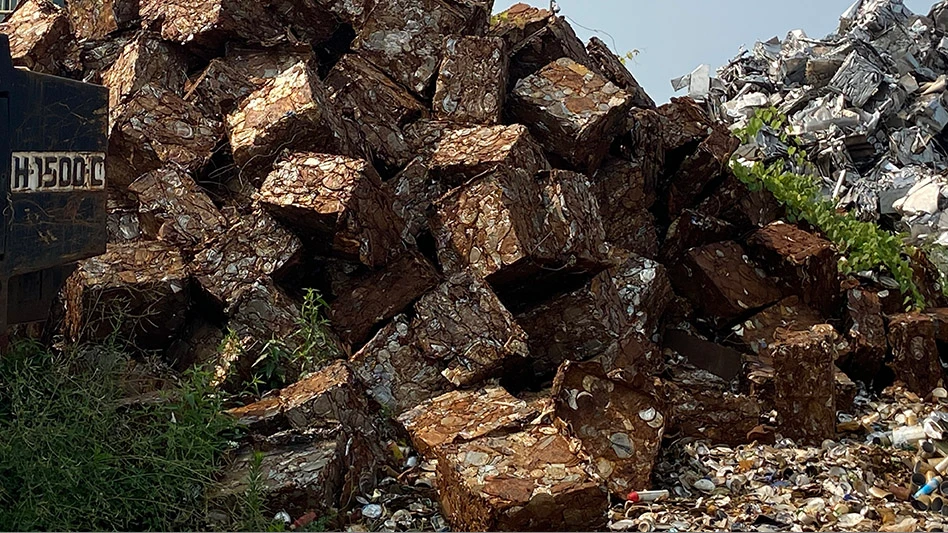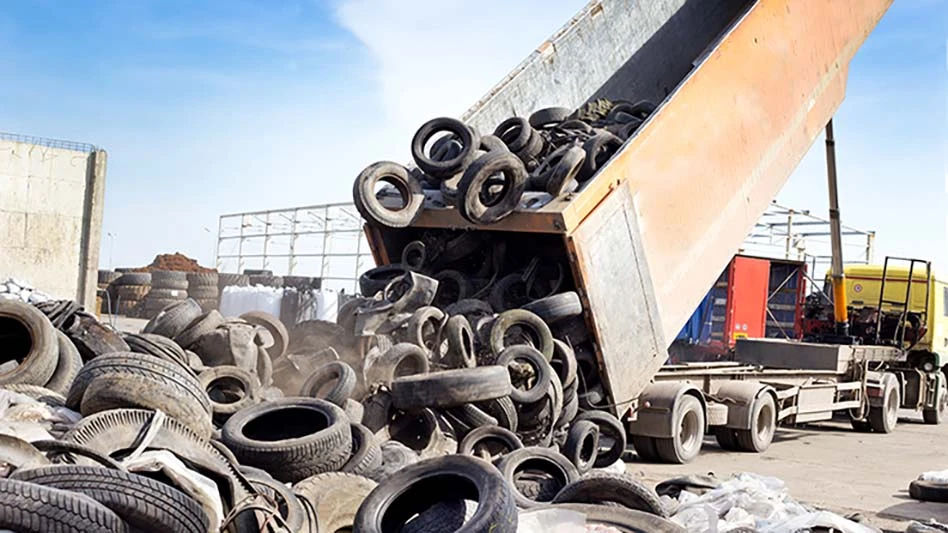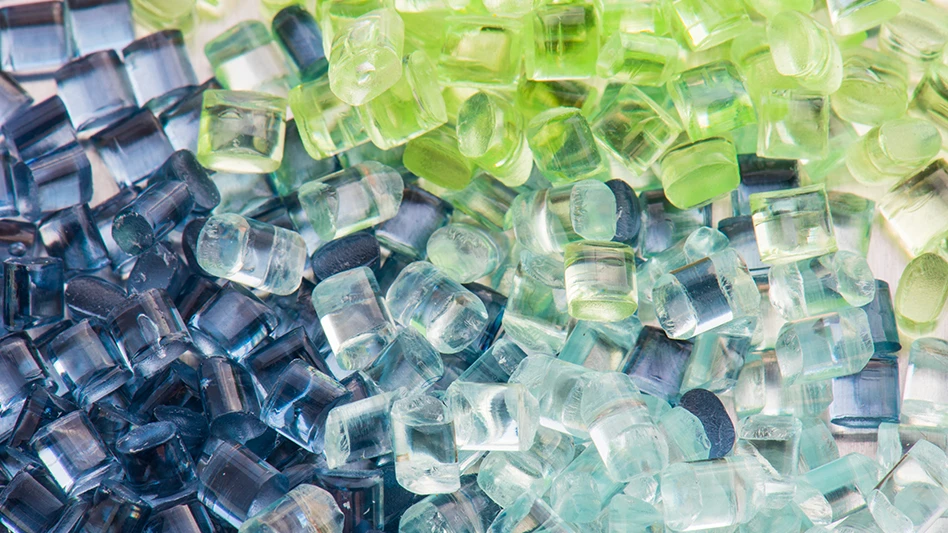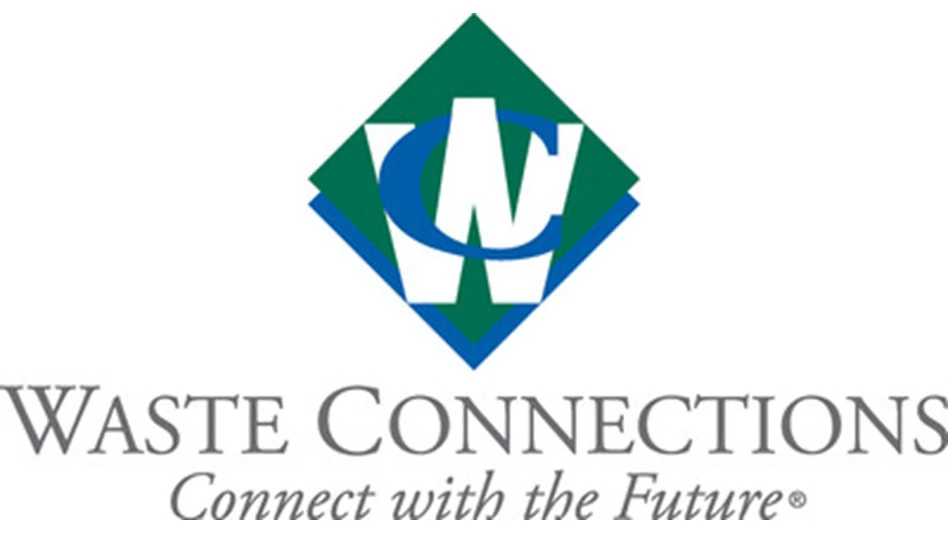ALLENTOWN FAVORS GLASSPHALT PAVEMENT
The city of Allentown, Pa., has made glassphalt – asphalt enhanced with mixed-color recycled glass cullet – a preferred paving material choice. Since 1993, Allentown has used more than 80,000 tons of the material for street paving. The city expects to use 40,000 tons of the material in 1997, and according to the Glass Packaging Institute, almost 100 percent of the city’s roadway material used in 1997 will include post-consumer glass.
"Last fall, we held a roundtable of the city’s paving gurus to determine whether to continue with glassphalt or not," says Neal Kearn, Allen-town’s director of public works. "It was unanimous to continue with and increase the program. Our track record speaks for itself. If we were having problems, we wouldn’t have included it for 100 percent of this year’s road material."
ONTARIO REPORTS 12% RECYCLING BOOST
Recyclers within the province of Ontario recovered 12 percent more post-consumer material by weight for processing in 1996 compared to 1995. More than 500,000 tons of material were recovered in 1996 from 3.5 million households in the province. Programs designed to reach rural areas and apartment complexes may have helped to increase the figure in 1996, according to the Recycling Council of Ontario (RCO), Toronto.
Paper tonnage collected increased significantly for the second consecutive year. Nearly 350,000 tons were collected in 1996 compared to 300,000 tons in 1995 and 280,000 tons in 1994, according to the RCO.
L.A. EXPANDS CURBSIDE PROGRAM
As part of its "Recycle the Blue Way" program, Los Angeles has placed an order for half a million 90-gallon blue recycling carts from OTTO Industries, Charlotte, N.C., to be distributed to city residents. The program is a key part of the city’s objectives to divert 50 percent of its waste stream from landfills by the year 2000 while also controlling recycling program operating costs.
The city will use the blue carts to collect commingled recyclables, including aluminum, tin, steel and bi-metal cans; glass bottles and jars; plastic containers; and clean mixed paper including newspapers, magazines, catalogs, cardboard, food boxes, telephone directories, office paper, computer paper and paper bags.
LONG BEACH WORKS TO GET RECYCLING BUSINESSES
All municipalities would like to entice new businesses to their region, and if those are recycling businesses, so much the better. At the National Recycling Coalition’s annual Congress in Orlando last September, Jim Mang, consultant for the Integrated Resources Bureau of the Long Beach, Calif., Department of Public Works, gave tips to other municipalities based on his city’s success.
Long Beach has been successful, said Mang, through a combination of positive attributes – it contains a lot of heavy industry and the third largest international port in the world – and aggressive marketing efforts by the city to retain existing businesses and attract new ones.
Some of those marketing efforts include a Recycling Market Development Zone (RMDZ), which provides a 14 percent tax rebate on recycling equipment, low interest loans, loan packaging and technical assistance; an export development office; and enterprise zone benefits such as a sales/use tax credit, a hiring tax credit, training programs, business expense deductions and net loss carryover.
BOSTON RATED BY INTEREST GROUP
A report prepared by the Massachusetts Public Interest Research Group (MASS-PIRG), ranked Boston sixth in its recycling rate out of 11 cities studied. While that rating may be an improvement over Boston’s 15th out of 15 cities studied in the 1991 MASSPIRG report, the group noted areas where it feels the city can improve.
MASSPIRG suggests the city provide financial incentives to those haulers serving neighborhoods where recycling rates improve.
IOWA WASTE REDUCTION AWARDS
The Iowa Department of Natural Resources recently presented the Ninth Annual Governor’s Waste Reduction Awards, including one for successful recycling to a John Deere facility in Waterloo, Iowa.
The John Deere Waterloo Works has established several recycling projects, including a C&D project in 1995 that saw nearly 22,000 tons of material recycled from five buildings for a 99.9 percent recycling rate.
A computer recycling project at the plant has resulted in 28 tons of computer components being recycled, and the facility has also undertaken programs to boost its waste paper recycling rate.
Another Iowa award winner, the Marshalltown Lennox Industries plant, recycled cardboard and wooden pallets to help achieve its 92 percent landfill diversion rate.

Explore the November 1997 Issue
Check out more from this issue and find your next story to read.
Latest from Recycling Today
- Lautenbach Recycling names business development manager
- Sebright Products partners with German waste management equipment company
- WasteExpo transitions to biennial format for enhanced experiences
- Study highlights progress, challenges in meeting PCR goals for packaging
- Washington legislature passes EPR bill
- PureCycle makes progress on use of PureFive resin in film trials
- New copper alloy achieves unprecedented high-temperature performance
- Gränges boosts profits and sales volume in Q1 2025





